One of the most popular excursions through Durmitor National Park is the “Ring around Durmitor“. This 85 km long circular tour winds through a magnificent landscape, across vast mountain pastures, through dense forests and past breathtaking viewpoints.
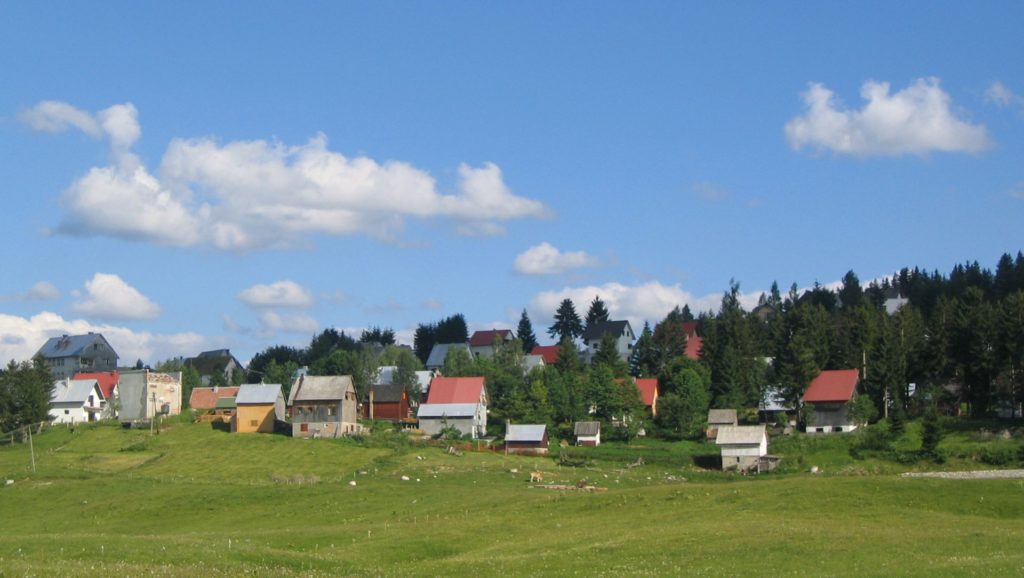 Six years ago, when we made this trip for the first time, a significant stretch of the road was not paved yet. We still managed to do the tour with our camper van in August 2012 – but I admit, it was risky enough! Nowadays the road is paved, but it is still quite narrow with a lot of stones falling from the rocks. That is why most people prefer an organized jeep safari, which is offered by several companies.
Six years ago, when we made this trip for the first time, a significant stretch of the road was not paved yet. We still managed to do the tour with our camper van in August 2012 – but I admit, it was risky enough! Nowadays the road is paved, but it is still quite narrow with a lot of stones falling from the rocks. That is why most people prefer an organized jeep safari, which is offered by several companies.
Our jeep tour with a group of Dutch camper tourists early in June was organized by Camping “Kod Boće”in Žabljak. The weather was perfect, the 4WD’s were comfortable and everybody was deeply impressed by the fantastic landscapes.
Description of jeep safari “Ring around Durmitor”
Departing from Žabljak we passed the authentic village of Bosača, the highest permanently inhabited village of the Balkans (1600 m above sea level).
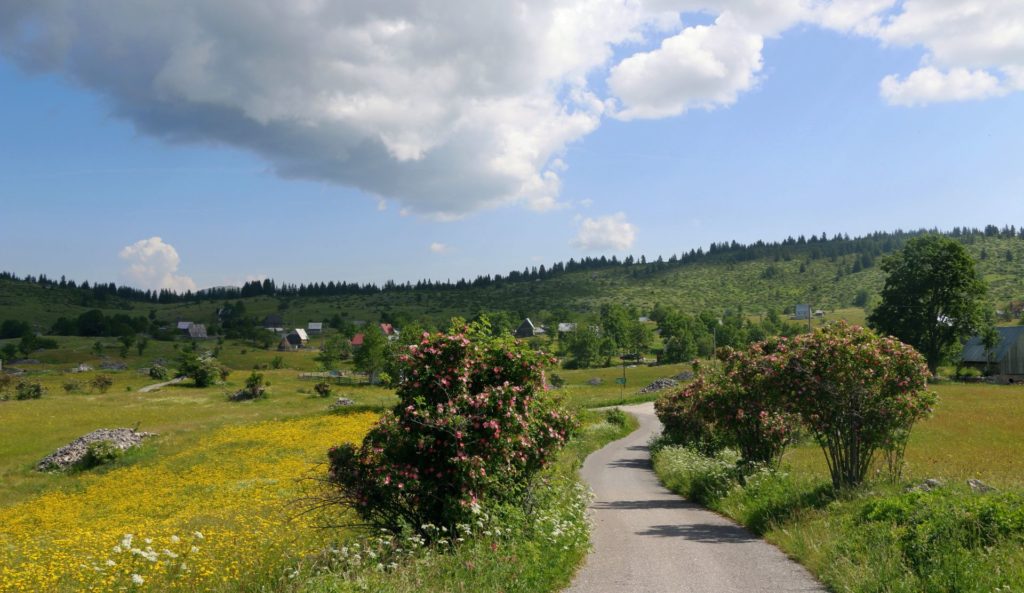 Our first stop was Momčilov Grad, once a well-known restaurant/motel on the top of popular ski slopes. The dilapidated ski lift was still there; obviously, it had not been used for decades… But, from the terrace, the view of the town of Žabljak, Crno Jezero (Black Lake) and the surrounding mountains was amazing!
Our first stop was Momčilov Grad, once a well-known restaurant/motel on the top of popular ski slopes. The dilapidated ski lift was still there; obviously, it had not been used for decades… But, from the terrace, the view of the town of Žabljak, Crno Jezero (Black Lake) and the surrounding mountains was amazing!
The narrow road along the Tara Canyon, without any guardrails, was a challenge for those who suffered from fear of heights. And so was Veliki Štuoc (2050 m) – the highest point of the tour and a spectacular viewpoint. No photo can reflect our feelings when we were standing on the edge of the Tara Canyon – the deepest canyon in Europe and the second deepest in the world (1300 m).
The excursion did not include a visit of Mala Crna Gora (in translation: Little Montenegro), a remote village on the edge of the Sušica Canyon. If you make this tour on your own, this authentic village is absolutely worth a visit; it looks as if time has stood still. We could hardly believe that the road to this village had been cleared late in May only. Due to the harsh weather conditions and thick snow cover (up to 6 m), the 50 inhabitants – all of them elder people – had been totally isolated for more than 6 months!
From this point, the road followed the canyon of the Sušica river, a river that mostly flows underground. We made another stop at a fantastic viewpoint, 300 m above the canyon. At the other side of the canyon we saw the houses of Nedajno, and it was almost unbelievable that we could reach that village by car. But through dense forests and under sharp rocks, we slowly descended to the bottom of the canyon.
And that is where we saw a unique phenomenon – a beautiful lake called Sušičko Jezero. This was the second time I saw it filled with water, which happens only in the period when the snow from the surrounding mountains is melting. Later in the summer, the lake dries up and turns into an picturesque valley – but now it really looked like a Swiss mountain lake. The idyllic house near the lake was unfortunately abandoned, but a natural spring provided fresh water and we met some enthusiastic tourists who had spent the night here with their camper van.
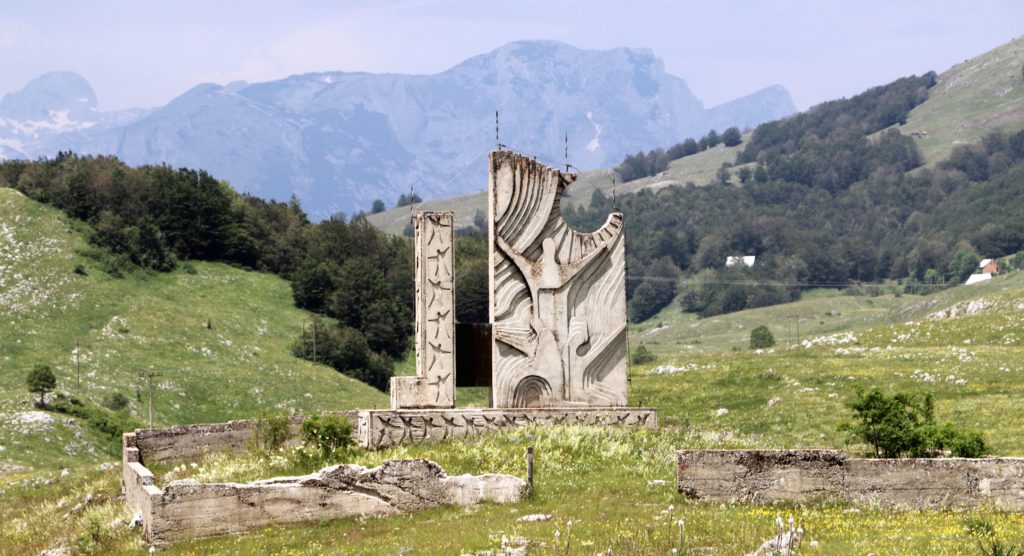 On our way to Nedajno we had to ascend the other side of the canyon, over a steep switchback road through beautiful old forests. Nedajno means “Don’t give” and got its name by the inhabitants who – according to the legend – didn’t allow the building of a monastery in their village. From here, Mala Crna Gora looked like a maquette on the other side of the canyon.
On our way to Nedajno we had to ascend the other side of the canyon, over a steep switchback road through beautiful old forests. Nedajno means “Don’t give” and got its name by the inhabitants who – according to the legend – didn’t allow the building of a monastery in their village. From here, Mala Crna Gora looked like a maquette on the other side of the canyon.
Soon we arrived in Trsa, where we had lunch in the traditional Milogora restaurant. It was a plain but good meal with trout or lamb and delicious apple pies.
A strange place, Trsa. We saw a few eco-campsites with wooden cabins, local people with horses and an old Montenegrin who carried a radio playing loud national “gusle” music while he was walking along the road. No, he didn’t ask for money, he was just proud of being a Montenegrin and wanted to show it in this way. Another strange experience was the forgotten World War II monument, located in the middle of a colorful pasture. What happened here in those times, in the middle of nowhere?
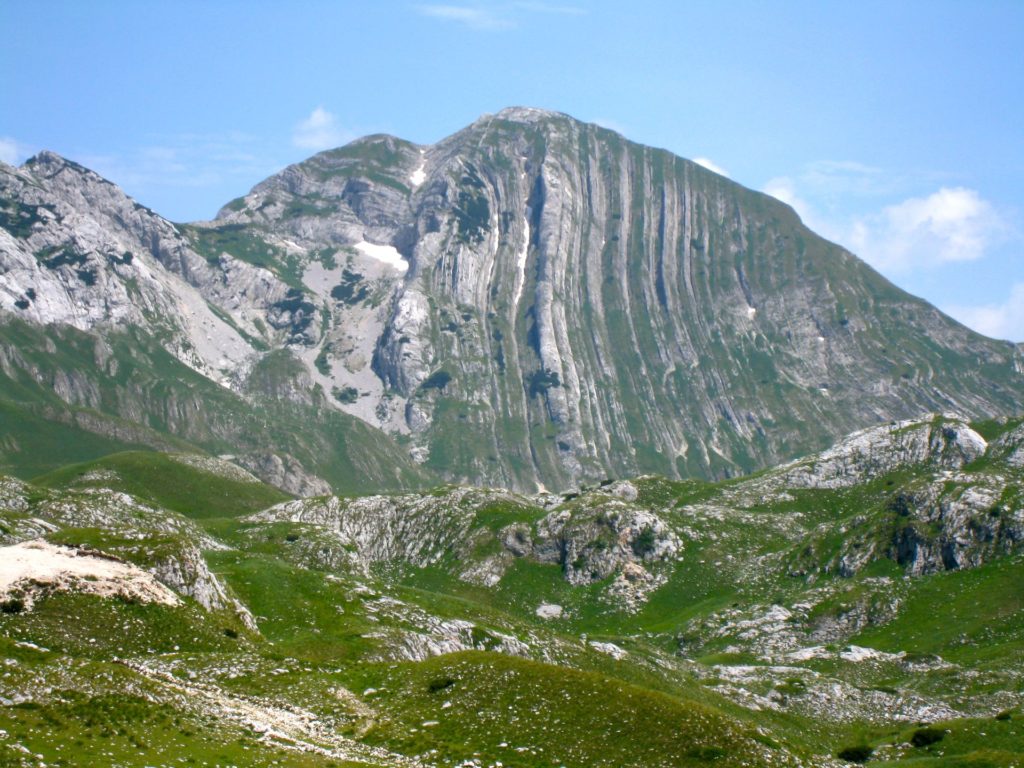 The most beautiful part of the tour was still ahead of us. At first we drove over a plateau covered by juicy grass, unbelievably green, almost fluorescent. And millions of colorful spring flowers everywhere around us….
The most beautiful part of the tour was still ahead of us. At first we drove over a plateau covered by juicy grass, unbelievably green, almost fluorescent. And millions of colorful spring flowers everywhere around us….
Then we saw, in front of us, Mount Prutaš with its vertical rock plates. Patches of snow were still remaining along the road and around the pool at the foot of the mountain. Flocks of sheep were roaming over the pastures with their shepherds. A magic place!
Approaching Mount Sedlo through the pastures of Dobri Do, we convinced ourselves that it really looked like an enormous saddle (in translation, “sedlo” means “saddle”).
Passing the Sedlo Pass (1907 m), the highest paved pass in Montenegro, we saw deep down, on the other side, the picturesque lake of Valovito Jezero. “Valovito” means “undulating” and that is the right word for this lake situated among weird “undulating” rocks.
The narrow winding road passed under the picturesque cone-shaped rock called Stožina, passed the deep blue lake Modro Jezero and entered the upper part of the valley of Pošćenska Dolina. After having passed through the village of Virak and along the ski slopes of Savin Kuk we got back to our starting point. It was a wonderful excursion!
Details about the jeep safari
The duration of the tour varies and depends on the organizer. Some agencies include a lunch in Trsa (trout or lamb), other companies include a visit of Mala Crna Gora with tasting of local products or make a detour to Piva Lake. Most excursions last between 4 and 6 hours, starting from Žabljak. Available from June to October.
Individual tours
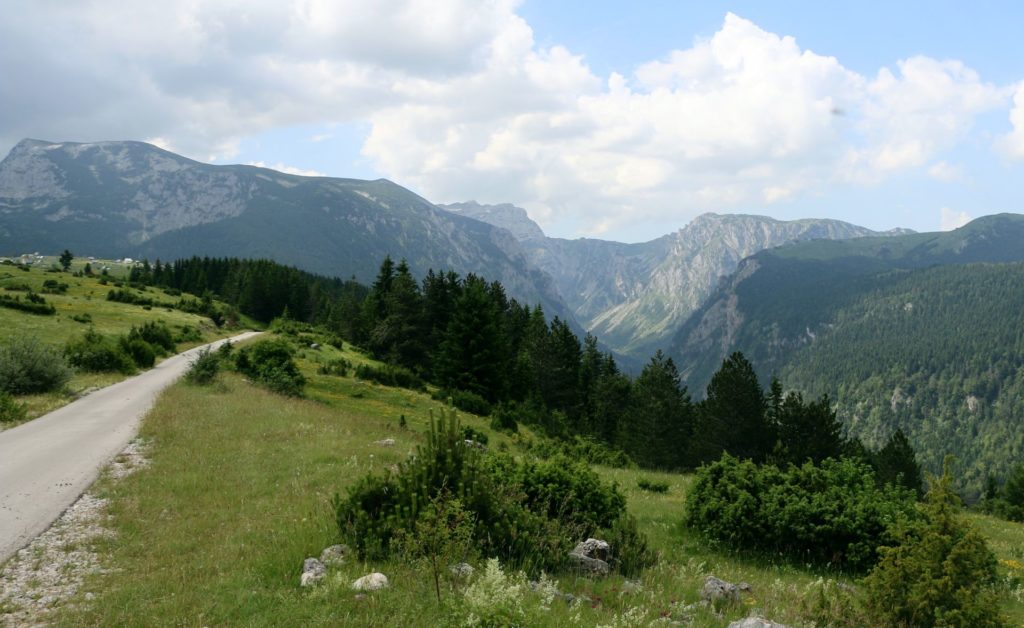 If you have a 4WD, or if you rent one, you can make the tour on your own, stop wherever you want and be completely free to explore the region.
If you have a 4WD, or if you rent one, you can make the tour on your own, stop wherever you want and be completely free to explore the region.
But the road is also passable for passenger cars and smaller camper vans, if you are used to driving in the mountains and not afraid of heights. In that case you can also make the detour from Trsa to Plužine and enjoy the picturesque tunnels and views of Piva Lake that are part of the Sedlo Pass Route.
The roads of the Ring around Durmitor are paved, but very narrow and winding. At some places there are potholes and the edges are crumbling away, at other places the road is only wide enough for one vehicle. Guardrails or other forms of protection are hardly present.
After rainfall there may be a lot of stones on the road, fallen from the rocks – in particular in the Sušica Canyon.
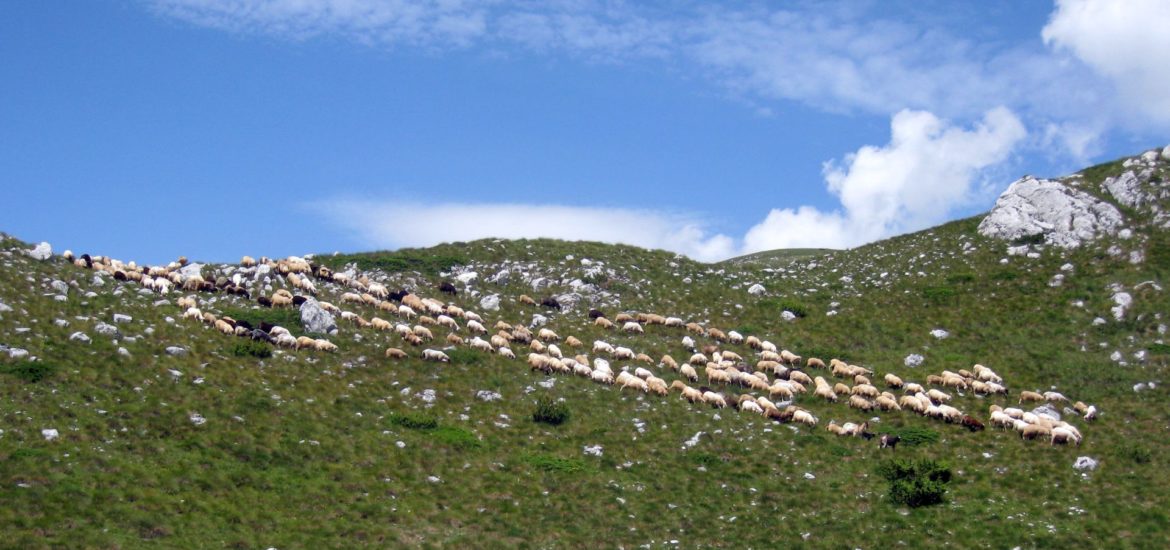
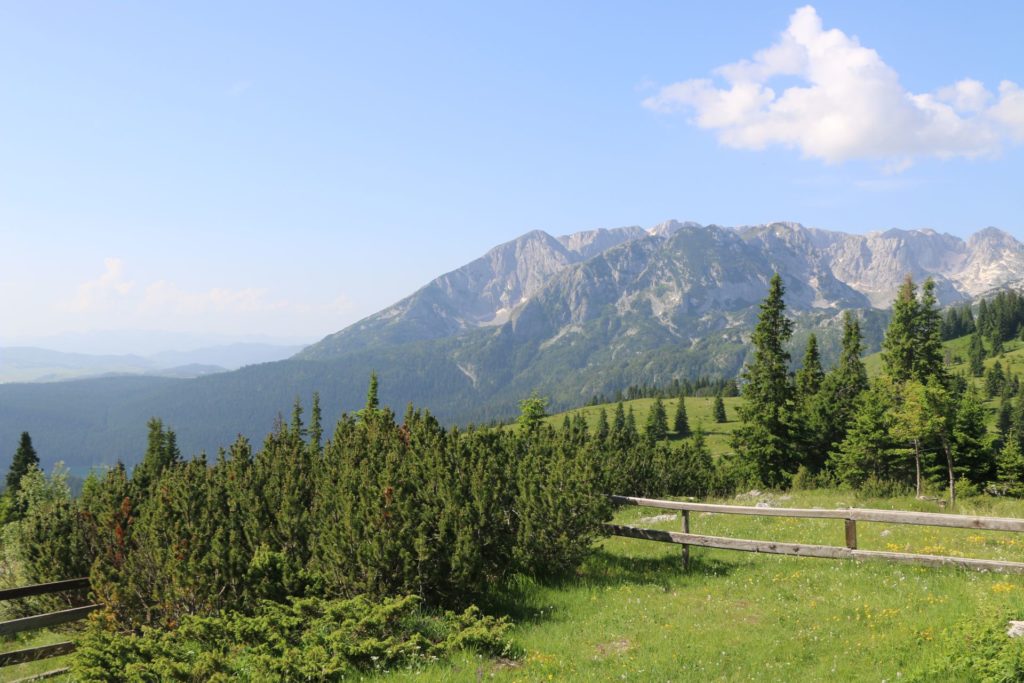
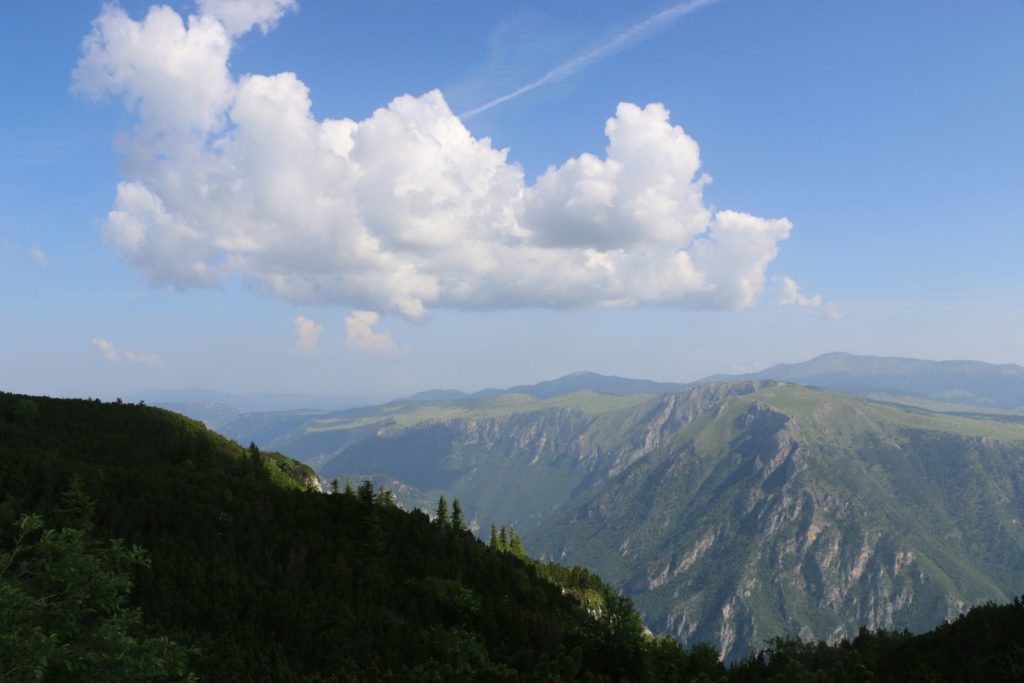
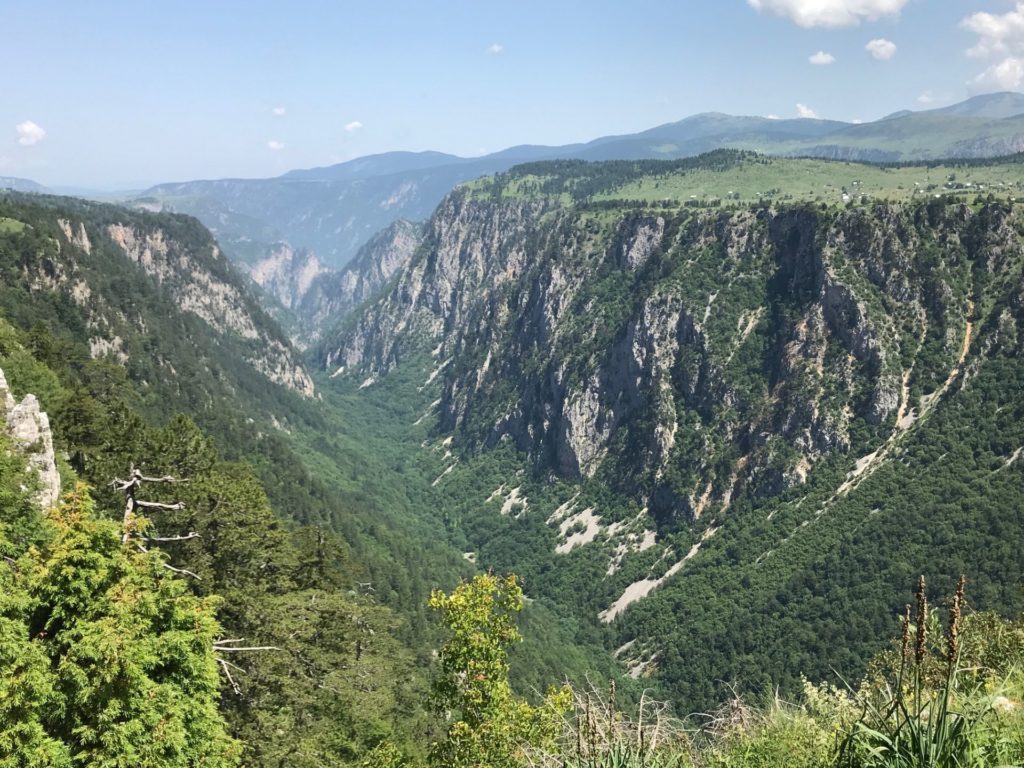
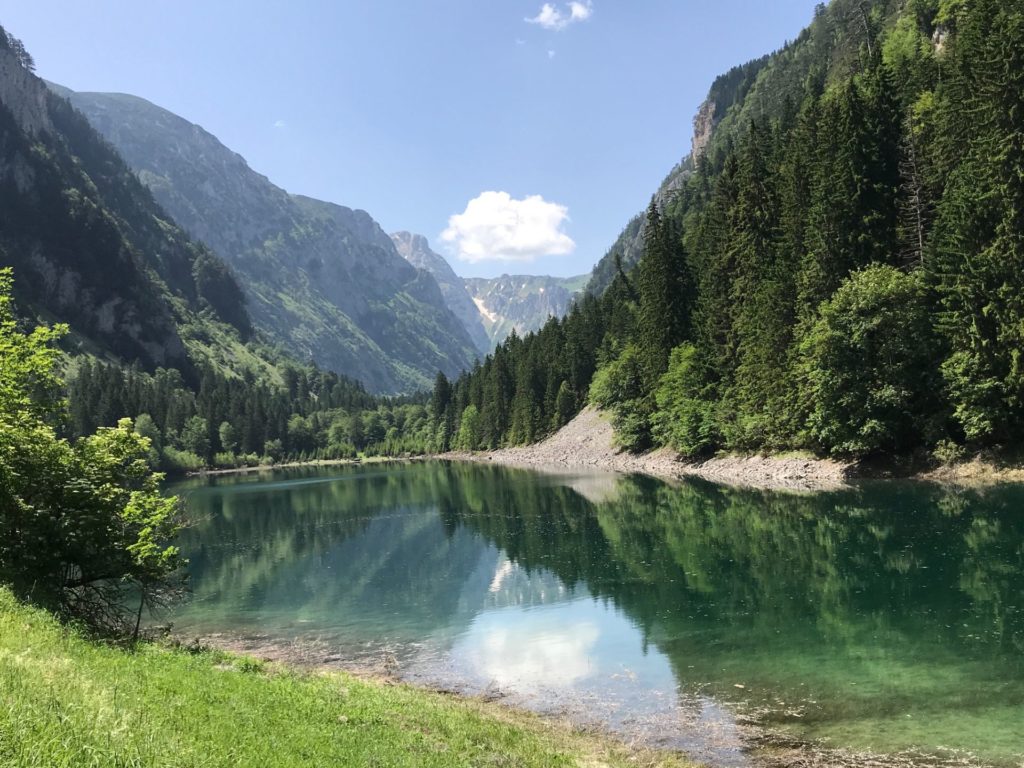
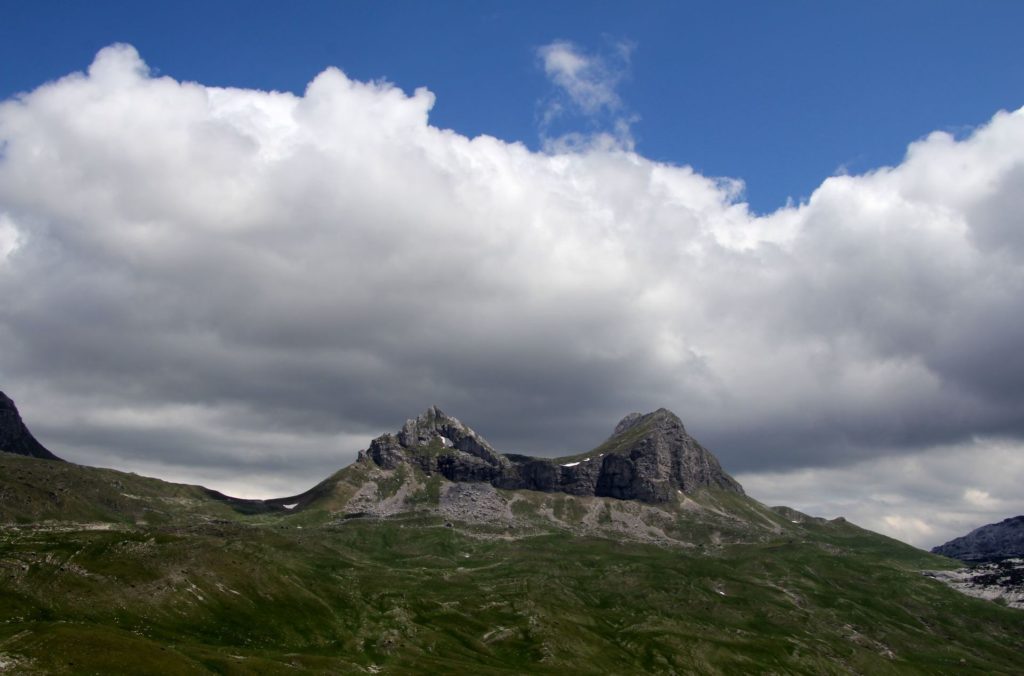
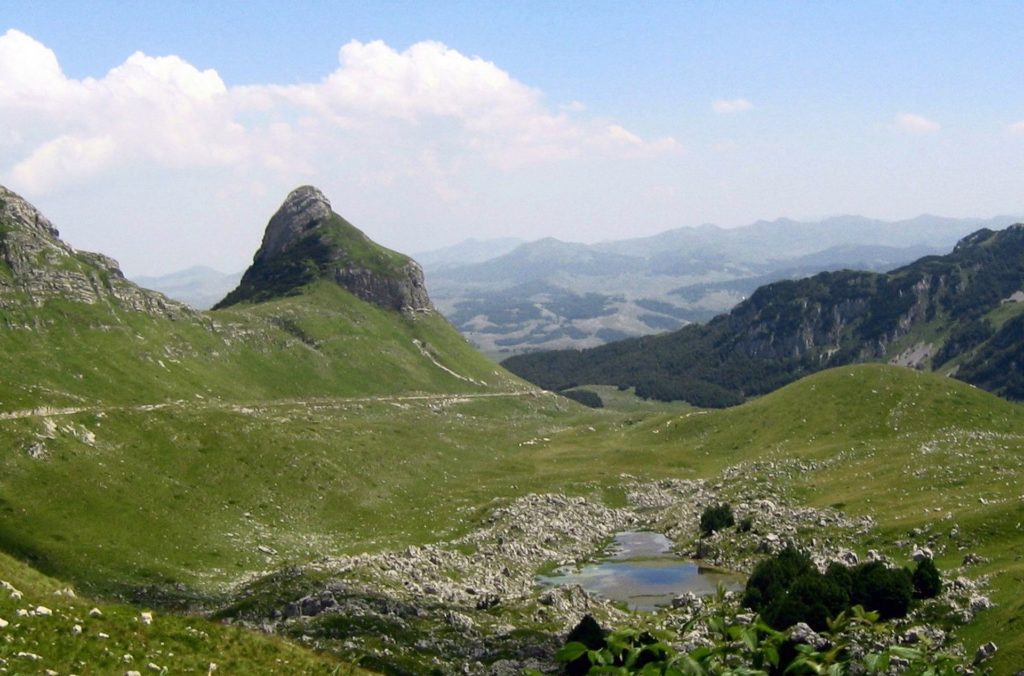
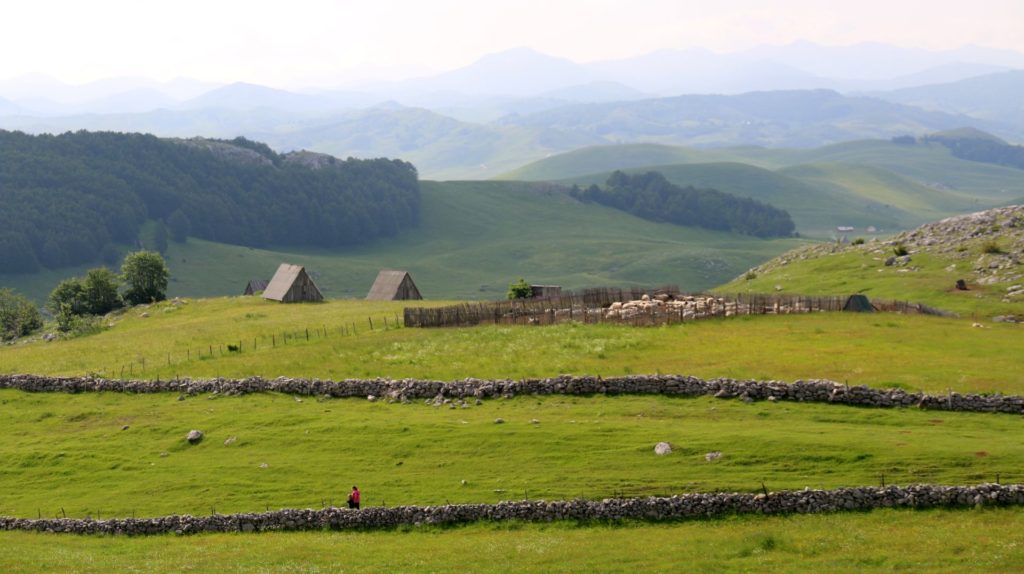
[…] An update about the “Ring around Durmitor” appeared on July 4th, 2018. See JEEP SAFARI: RING AROUND DURMITOR […]
Hi Mariana! We have done this month the ring around Durmitor and is really amazing, specially the P14 road between Pluzine and Zabljak! Another of my favourite places was the Susica canyon, in September it was totally dry but is a very lonely place, I enjoyed here a lot. A bit difficult to arrive to Susica with some rocks in the middle of the road but it was worth it. Have you seen anytime bears at night in this place? I was a little afraid about it!
[…] Il commence à se faire tard et nous avons toute la route Sud de Durmitor à faire. Heureusement elle se révélera beaucoup plus facile que celle du Nord mais beaucoup plus fréquentée. Les vues sur les différentes formations rocheuses et montagnes sont franchement superbes (je ne vous raconte même pas le nombre d’arrêts photos que j’ai imposé à la famille…) surtout en fin d’après- midi. Conclusion de la journée : la route nord est moins belle mais plus authentique que la route sud. Si ne vous sentez pas de conduire sur des routes minuscules, prenez la route sud à l’aller et au retour, sinon partez à l’aventure comme nous. […]
[…] we have crisscrossed the Durmitor region many times, we have never explored the narrow mountain road from Šavnik to Plužine that runs […]